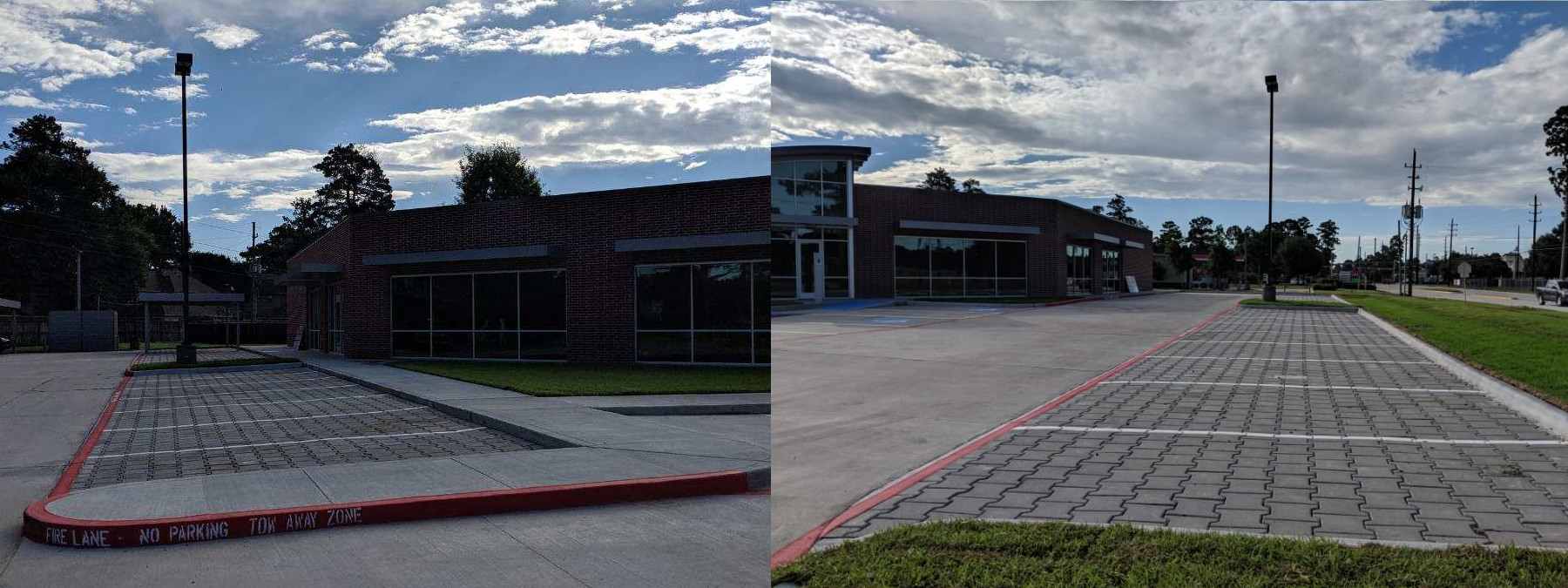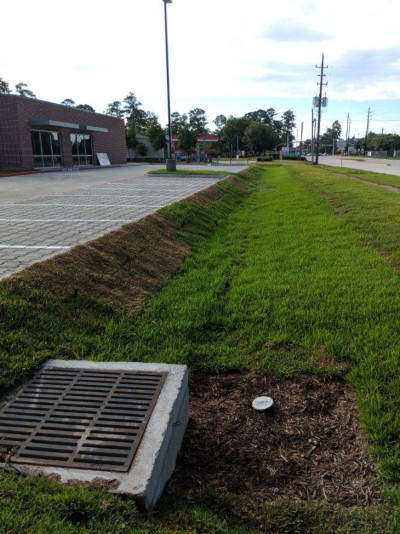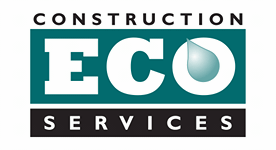
Improving the “Value” of a Stormwater Detention System
SUMMARY
Martinez Professional Building II is a .95 acre commercial site for professional offices. The engineers were able to take advantage of using Harris County’s Low Impact Development (LID) regulations by increasing the time of concentration of storm water on this site. They achieved this by using Low Impact Development methods verses designing a traditional detention / retention pond or underground detention system.

CHALLENGE
Originally the site was design with bioswales. Due to a limited outfall depth, to maximize the storage volume a gabion wall was used to separate the swale from the parking lot, increasing the volume capture in the swales. Unfortunately, the gabion walls proved to be very expensive once the structural analysis was done to support the vehicle loads that would be applied to the wall from the parking lot. Construction EcoServices was asked to provide a systematic method to improve the “value” of the stormwater detention system by looking at the myriad of options in our tool box.
SOLUTION
When this original design was brought to Construction EcoServices design team, they quickly realized they could achieve the same time of concentration and meet LID regulations by switching out the gabion walls with permeable, open-jointed concrete pavers in the parking lot. For the owner and contractor, the permeable pavers also proved to be more cost-effective than the gabion walls. Open-jointed pavers were selected for the the pavement surface due to their high flow rates and ease of maintenance. The permeable pavers sat on an 18-inch bed of aggregate that stored water before entering a 6” perforated pipe that drained to the bioswales. The bioswale would be designed with a FocalPoint High Performance Modular Biofiltration System (HPMBS) that would restrict and treat flows prior to discharge. During heavy rain events the water will bypass the biofilter through an overflow where a secondary restrictor will manage the higher flows.






